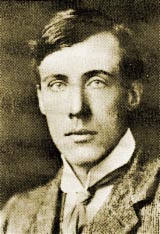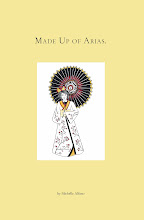Toby's Room by Pat Barker (Hamish Hamilton, 2012) 264 pages
**SPOILER ALERT**
What a bleak
picture this book paints of pre-WWI England - the book begins in 1912.
The Brooke family fulfills many of the cliches of English middle class life: a
repressed, unaffectionate family; an independent, strong minded and
creative girl who chafes under the watchful eye of her parents; a
spirited, patriotic son of the empire.
In the first twenty pages of this book, we learn two disturbing things about the Brooke family. Elinor and Toby Brooke, older brother and younger sister, are close - both somewhat alienated from their emotionally repressed parents. Elinor attends the prestigious Slade School of Fine Art in London and is a talented, aspiring artist. Toby is a high-spirited, vaguely self-absorbed, highly indulged boy who volunteers in the Great War as a doctor.
I loved Toby Brooke's name as it, I think very consciously, reminds the reader of the names of both Thoby Stephens (Virgina Woolf's brother) and Rupert Brooke, a handsome and hugely popular young poet killed during WWI. Pat Barker echoes, in part, Woolf's Jacob's Room, a fictional work, which details the life and early death of her brother Thoby. Rupert Brooke makes somewhat of an appearance (in a manner) later ... More of this anon.
When Toby kisses and gropes Elinor during one of their daily rambles to the mill near their home, a childhood haunt, she, and her world, fall apart. Secondly, disturbingly, Elinor soon after learns from their mother that Toby was a twin; the other twin, a female, died in their mother's womb before Toby was born. This twin is known as a "papyrus twin" or a "vanishing twin":
... one, or more, of the feti in a multiple pregnancy dies and the
fluid component of their body is absorbed, resulting in the
mummification, but due to the bones being reasonably well developed by
this gestation the fetus continues to maintain a recognizable shape, it
is then compressed by the growing twin leading to the flattening. midwifemuse.wordpress.com
In an odd manner, this troubled history reassures her ... Toby's devotion to his younger sister Elinor makes more sense (aside from that last very disturbing incident). He is missing his twin, his double, and Elinor has taken the vanished twin's place. But for the reader, another image comes to mind, Toby's female twin being crushed and destroyed by the male twin.
Elinor responds strongly to Toby's unwanted advances; she cuts her long hair into a ragged, unattractive mop with a blunt pair of scissors. She focuses on her studies - in particular her anatomy classes - where she is required to dissect a corpse, picking it clean to examine all aspects of the human body. She approaches the task with admirable courage but balks at dissecting the head and face of this unknown man, likely indigent and without a name. In light of the fate of many of the men of Toby's generation in the Great War, which is only two years away, this is a terrible harbinger of things to come.
Initially, she distances herself from Toby in disgust but when he falls ill, possibly with pneumonia, she remains by his side to nurse him through a terrible night of suffering.
Spring forward to the height of the war five years later in 1917 ...
Elinor has seriously returned to her painting, living on her own for the most part at the family's farmhouse. Her paintings all feature enigmatic images of a shadowy figure, inevitably representing Toby. Intriguingly, Elinor meets Virginia Woolf at the Charleston Farmhouse owned by Vanessa Bell (unnamed in the novel, merely referred to as V.B.). Woolf solidifies Elinor's own stance on the war: "Women are outside the political process and therefore the war's got nothing to do with them". But this is not really true for Elinor, as much as she wants to remain apart from it. This is a classic battle that artists face regarding their relationship to war as she explains later in the novel:
It's like the pacifists. You know, some of them, the majority, take on the work of 'national importance' ... and they go and work on a farm or in a hospital. But the others - the absolutists - won't do that. They'd rather go to prison than contribute anything, anything at all, to the war. And I just think that's a stronger position, it's more logical, because the others are just pouring their bits of oil on the combine harvester and telling themselves there's no blood on their hands because they are not actually driving the wretched thing. And I know none of this applies to women but actually I think some of it does. So anyway that's why I don't contribute and ... and I don't paint anything to do with it. Because the war sucks that in too ...
We learn that Toby and two of Elinor's friends, Kit Neville and Paul Tarrant - the latter a former lover - have all gone to war. Kit and Paul return, Toby does not. His body is never found - he is believed to be dead. Silently grieving, uneasy about the lack of information surrounding his death, Elinor finds a mysterious note secreted in one of Toby's jackets, which is returned to the family after his reported death on the front line. The note suggests that he had a premonition he would not return and explicitly states that Kit knew why ...
 |
| Thoby, VW's brother |
After not receiving word from Kit about this or anything else regarding Toby, Elinor summons her former lover Paul, a Northern working class lad and a bit of an outsider at Slade, to her farmhouse to enlist his assistance. Barker moves smoothly from the female's emotional perspective to the male's ... intensely probing Elinor's conflicted love for her brother and segueing to Paul's lustful feelings for Elinor. Paul agrees to try and help her by speaking to friends of Toby's and Kit's.
The war has done strange and terrible things to the English: normally docile women throw bricks through the windows of small shops with foreign names even if they are not German; people are killing Dachshunds (presumably because of their German origin); the King has changed the royal family's name to the more British sounding "Windsor' to minimize his Teutonic heritage.
Paul learns that Kit has returned from the war and is very poorly, being lodged at Queen's Hospital which specializes in facial injuries. Elinor is eager to question him about Toby and persuades Paul to approach him. Kit is evasive but adamant that he has no knowledge of Toby's death and refuses to discuss it further. While there, Elinor encounters a former art school teacher who persuades her to use her artistic skills to aid the soldiers who have suffered horrific facial injuries by sketching them for the hospital - those damaged and frightening figures that she has encountered while waiting for Paul to question Kit.
She agrees. There is a real archive of photos and drawings that existed created by a surgeon named Gillies and a Slade Professor called Alan Tonks (who features in the novel) to help surgeons reconstruct the faces of the soldiers - you may view them on-line now but they are not for the faint of heart.
The most effective prose comes with the recovering Kit's nightmarish recollections of the events leading to Toby's disappearance. Barker effectively shifts between Kit's ill health and recovery at Queen's Hospital peppered with hallucinations and memories of his experiences on the front line as a stretcher-bearer during the war - vividly communicating the fear, disgust and terror that a soldier might experience in the trenches.
On a visit to Kit's home, Paul eventually inveigles Kit to reveal how Toby died. It's thoroughly disturbing - and not to be revealed here lest I ruin the book for you.
Some small anachronisms: would a student of modest means have his own private telephone in 1912 (as does Toby's friend at the height of his illness)? Was the Bloomsbury group called the "Bloomsbury group" in 1917 ... was not the term Bloomsberries (referring to its members) more common at the time?
But don't let these very minor points dissuade you - it's a wonderful book.












No comments:
Post a Comment